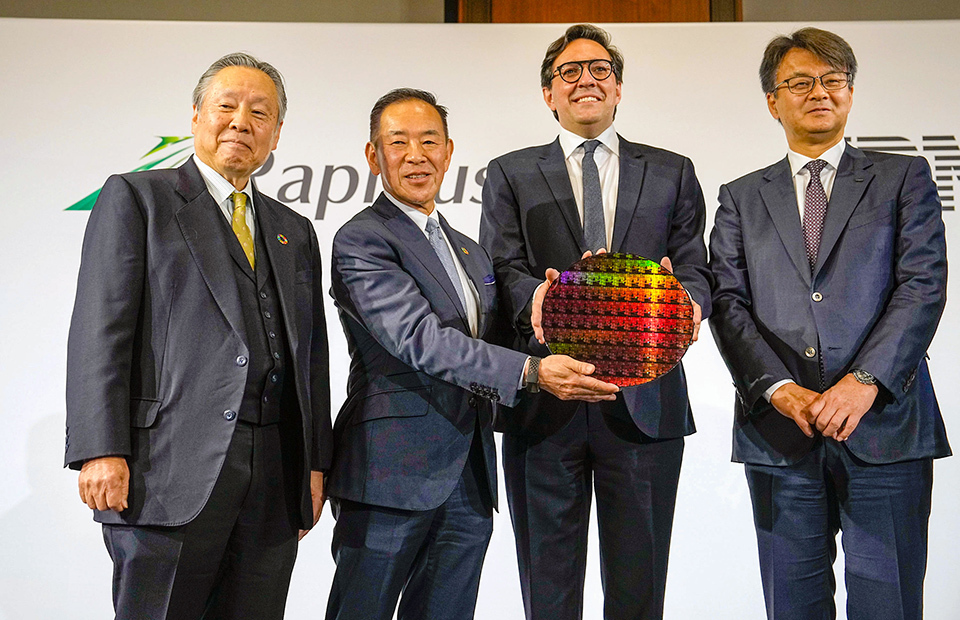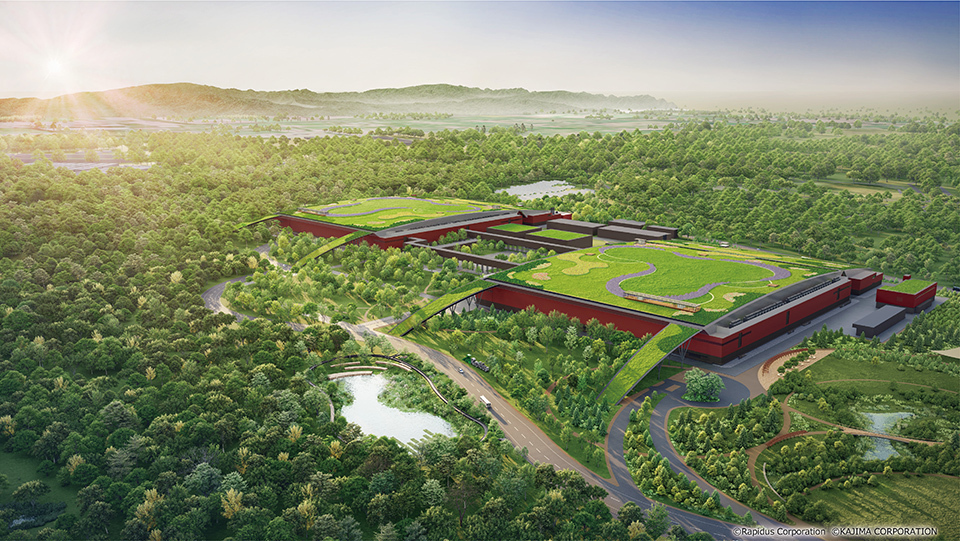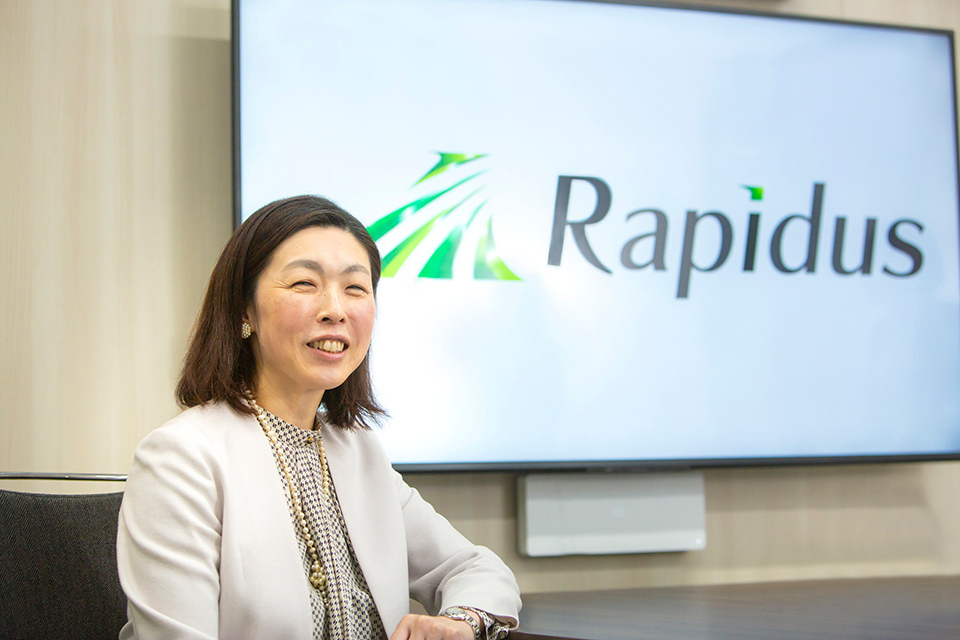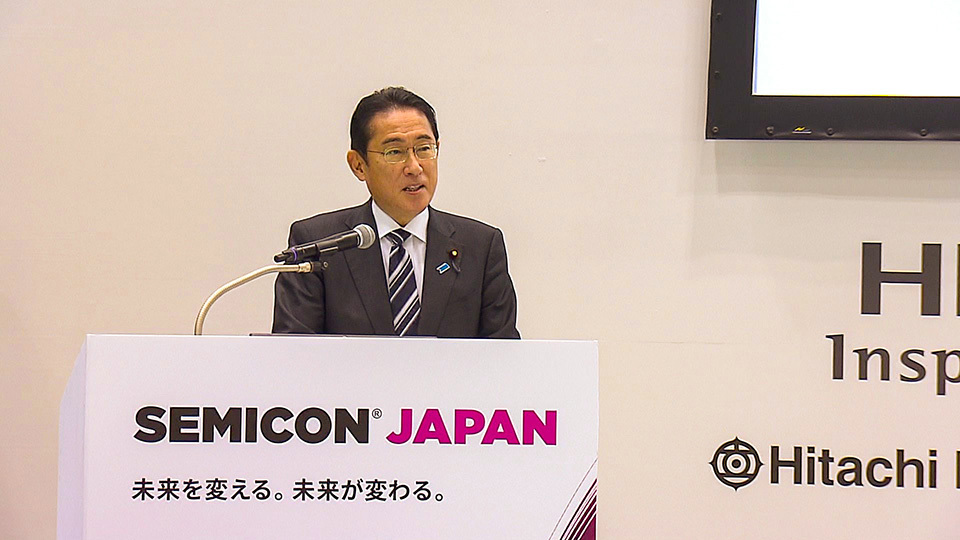With the goal of revitalizing Japan’s semiconductor industry, Rapidus was founded to establish design and manufacturing bases for next-generation chips. This article explores the company’s quest to develop a 2-nanometer (nm) chip mass production system that boasts high speed and can meet various requests, as well as the strategies being taken to achieve this.

In December 2022, IBM, which developed the 2-nm chip, and Rapidus, which will carry out its mass production, announced that they would be forming a partnership for joint development. KYODO NEWS/GETTY IMAGES
Next-generation semiconductors are a core material for realizing digitalization and decarbonization, and are also indispensable to generative AI and autonomous driving. Securing a supply chain for such chips is a pressing global issue. Against that backdrop, Rapidus Corporation was founded in 2022 to work on a project at the heart of Japan’s semiconductor strategy. Rapidus aims to develop a system for mass producing leading-edge 2-nanometer (nm) chips, which has yet to be realized anywhere. Major Japanese companies—including Toyota Motor Corporation and the Sony Group—have invested a total of 7.3 billion yen in this massive public-private partnership, while the Japanese government has announced support totaling 330 billion yen so far. A large-scale R&D facility and production plant is currently under construction in Chitose City, Hokkaido Prefecture. The company plans to set up a pilot production line in April of 2025, and to begin mass production in 2027.
Japan occupied more than half of the global semiconductor market in the 1980s, but other countries have been leading in this industry ever since. While plants in other parts of the world are currently mass producing 3-nm chips, the most advanced generation produced in Japan now is the 40-nm chip. “The architecture of the 2-nm chip is totally different from that of the 3-nm one, making mass production of the former a blank-slate challenge for all players. This critical juncture is a prime opportunity to break into the market,” said SHINDO Yukiko, senior human resources manager at Rapidus.

Artist’s rendering of the completed Rapidus plant in Chitose City, Hokkaido Prefecture. The future aim is for the surrounding area to become a green- and digital-transformation hub that brings together related industries and research institutes from across the globe.
The first, essential step in achieving mass production is collaboration with overseas partners. According to Shindo, “We need to cooperate with various companies around the world, since particular technologies and processes are being advanced by different leading-edge firms.” In 2022, Rapidus formed a partnership with IBM, which has successfully developed the 2-nm chip technology. Around 100 engineers from Rapidus have already been dispatched to IBM’s R&D center—the Albany NanoTech Complex in the state of New York—to jointly develop technology for the chip’s mass production. It also plans to open a business base in Silicon Valley, home to major IT and AI development companies. Additionally, Rapidus has formed a cooperative relationship with Interuniversity Microelectronics Centre (imec), an international organization in Belgium for semiconductor research, to receive technical support in such matters as the development of extreme ultraviolet (EUV) lithography systems.
Speed and customization are the key features of the production system being pursued by Rapidus. The company aims to establish a system that enables flexible responses to the needs of rapidly evolving, innovative fields such as AI. The semiconductor manufacturing process consists of (1) the design of the circuit, (2) the front-end process, in which the circuit is formed on the silicon wafer, and (3) the back-end process, in which the wafer is diced into individual chips and turned into products. As these processes are usually undertaken by different companies, even 3-nm chips require nearly two years from development to production. Rapidus aims to conduct both the front-end and back-end processes in-house, and also to support product design that optimizes production by utilizing big data obtained in the front-end process, thereby accelerating the speed of production exponentially—“like the difference between a regular slow train and a bullet train.”

“Now 20 to 30 employees join Rapidus every month. Although varying in age and specialty, they share the strong desire to accomplish the same goal,” said SHINDO Yukiko, the company’s senior human resources manager.
Organizations such as imec, along with the major chip-making equipment manufacturers ASML, Lam Research, and Applied Materials, have already decided to establish bases around the Rapidus plant in Hokkaido, and other related companies are expected to follow soon after. Blessed with vast land and abundant nature, the large plant at Chitose, reportedly constructed at a total cost of 5 trillion yen, is expected to involve several hundred engineers from Japan and abroad by the time operation starts.
Shindo noted, “Across-the-board capabilities—from factory safety and quality control to the ability to move things forward as a team—are the strengths of Japan’s manufacturing. We aim to make the most of those strengths and work with our partners worldwide to establish a new center for the semiconductor industry, contributing to the development of leading-edge technologies that will enrich people’s lives.”

In December 2022, immediately after the announcement of the partnership between Rapidus and IBM, Prime Minister Kishida gave an address at the international exhibition SEMICON Japan, stating that the national government will continue to fully support investment in semiconductor mass production in Japan.






























